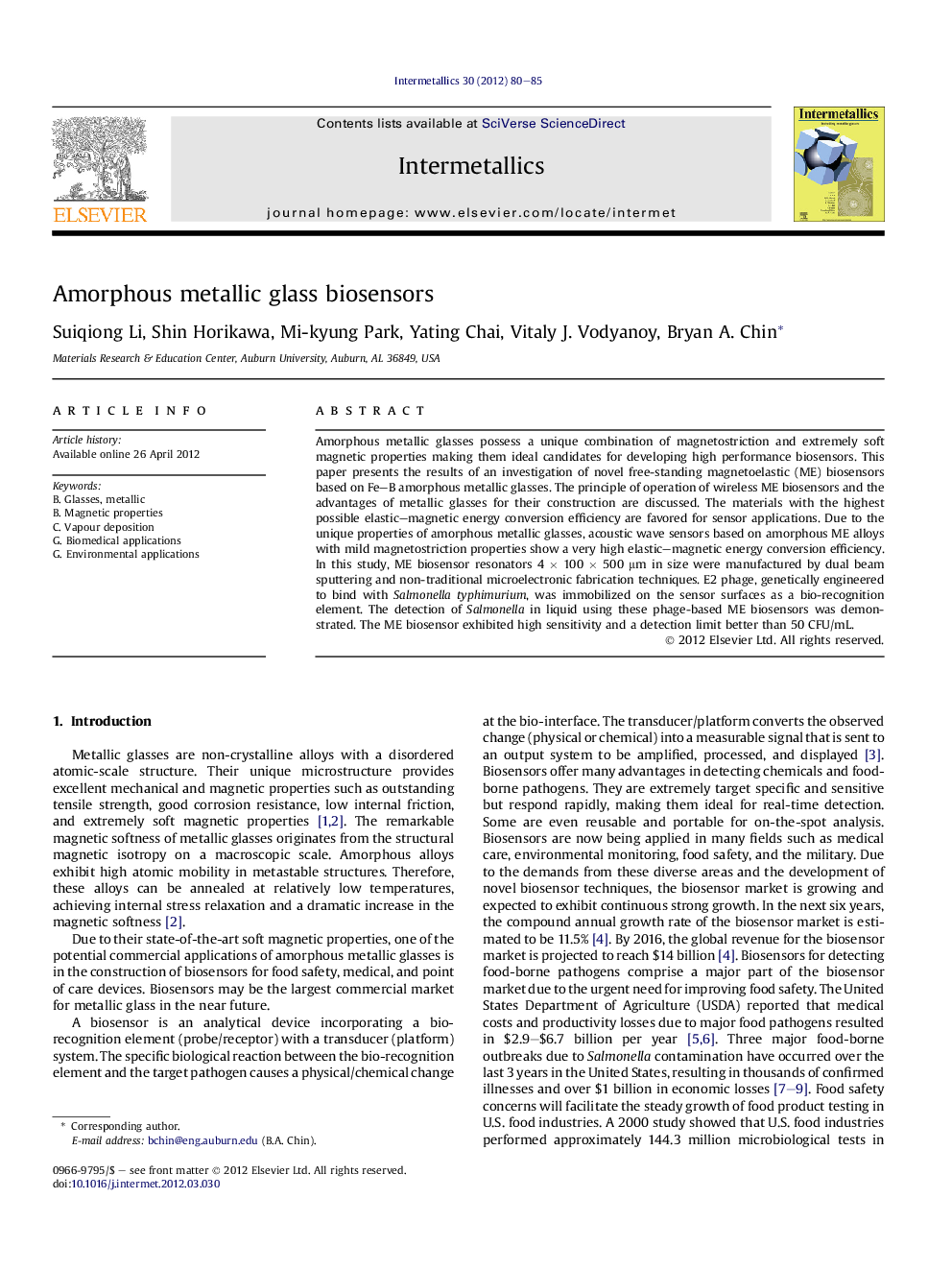| Article ID | Journal | Published Year | Pages | File Type |
|---|---|---|---|---|
| 1600405 | Intermetallics | 2012 | 6 Pages |
Amorphous metallic glasses possess a unique combination of magnetostriction and extremely soft magnetic properties making them ideal candidates for developing high performance biosensors. This paper presents the results of an investigation of novel free-standing magnetoelastic (ME) biosensors based on Fe–B amorphous metallic glasses. The principle of operation of wireless ME biosensors and the advantages of metallic glasses for their construction are discussed. The materials with the highest possible elastic–magnetic energy conversion efficiency are favored for sensor applications. Due to the unique properties of amorphous metallic glasses, acoustic wave sensors based on amorphous ME alloys with mild magnetostriction properties show a very high elastic–magnetic energy conversion efficiency. In this study, ME biosensor resonators 4 × 100 × 500 μm in size were manufactured by dual beam sputtering and non-traditional microelectronic fabrication techniques. E2 phage, genetically engineered to bind with Salmonella typhimurium, was immobilized on the sensor surfaces as a bio-recognition element. The detection of Salmonella in liquid using these phage-based ME biosensors was demonstrated. The ME biosensor exhibited high sensitivity and a detection limit better than 50 CFU/mL.
